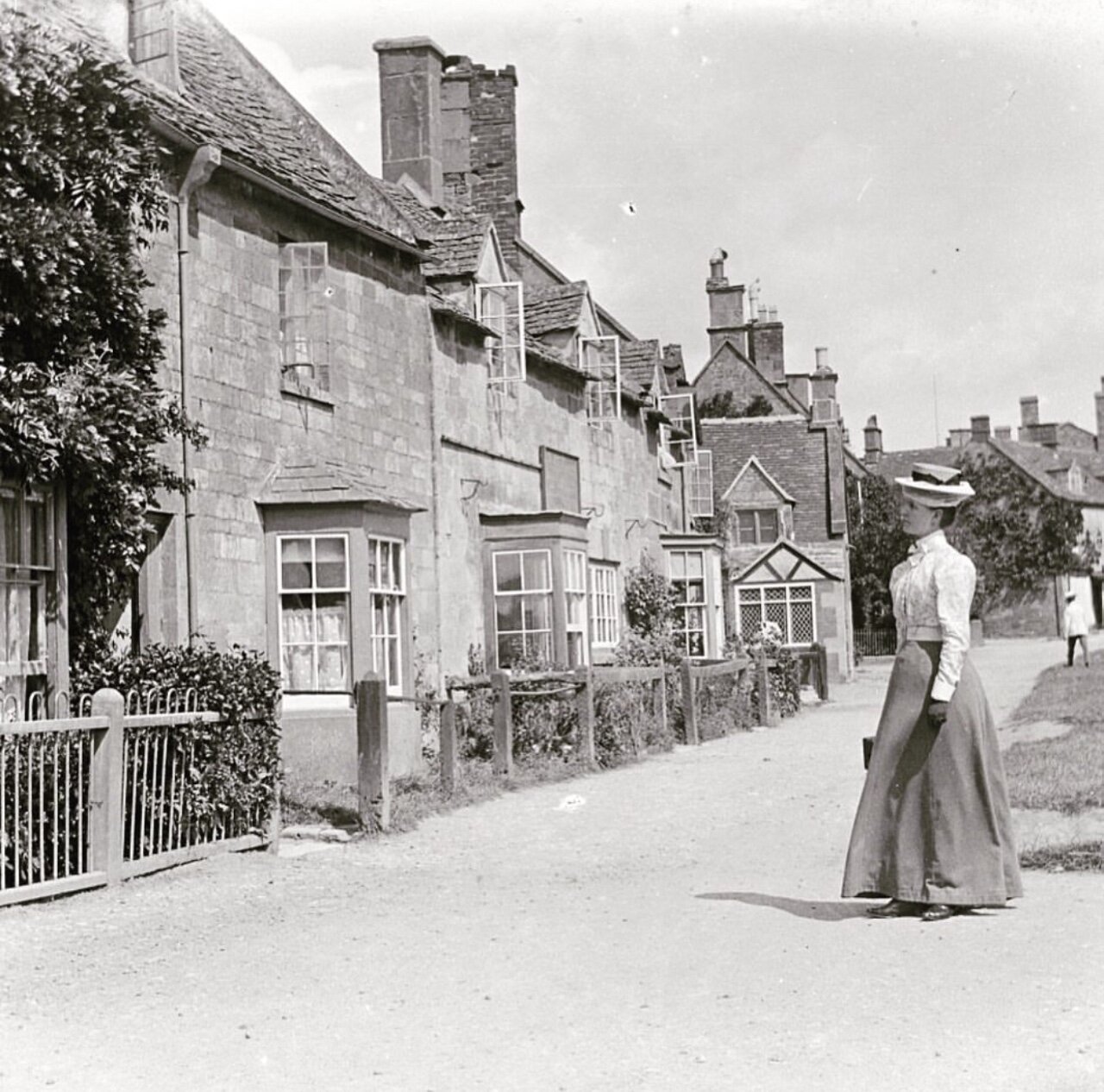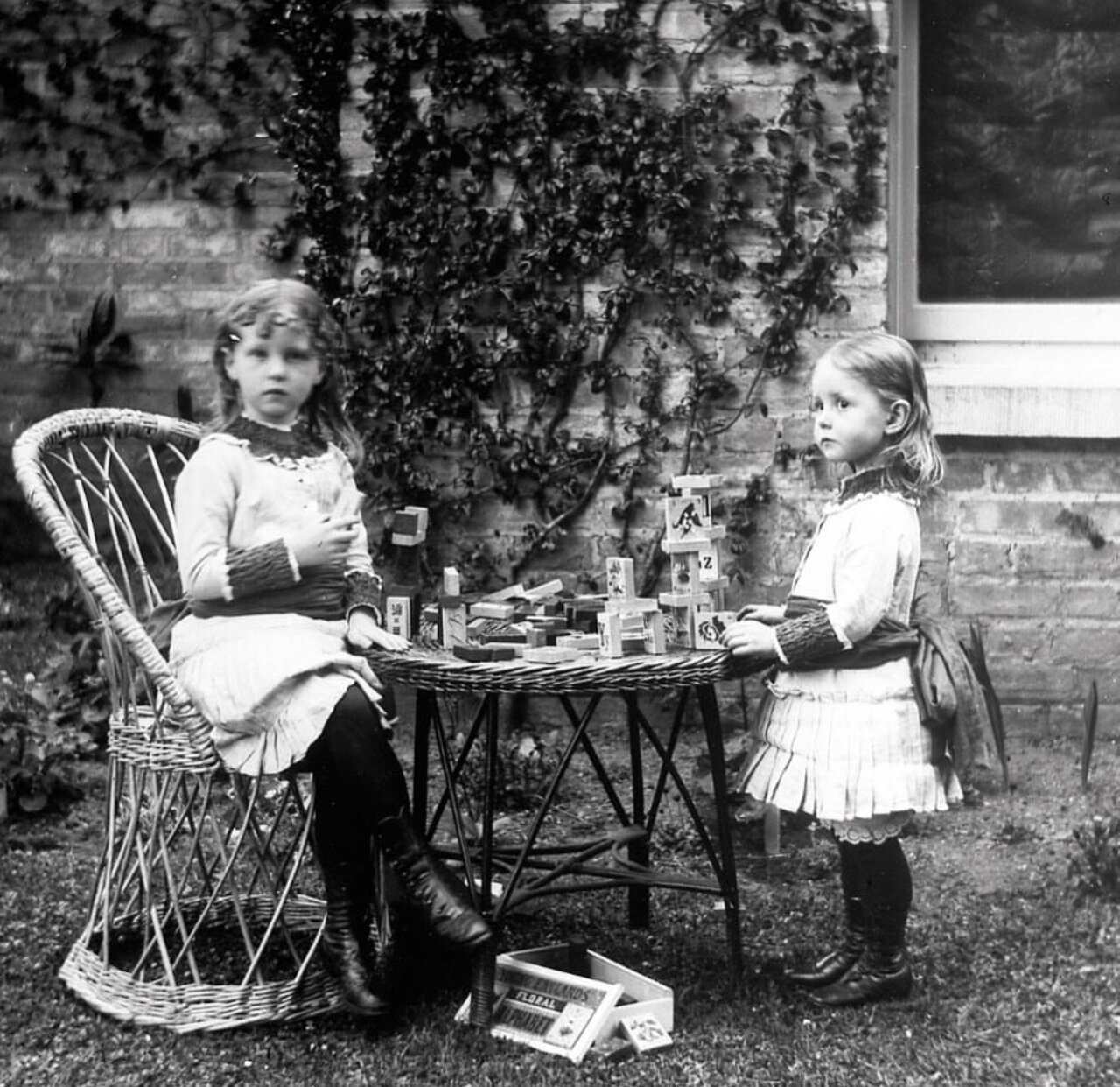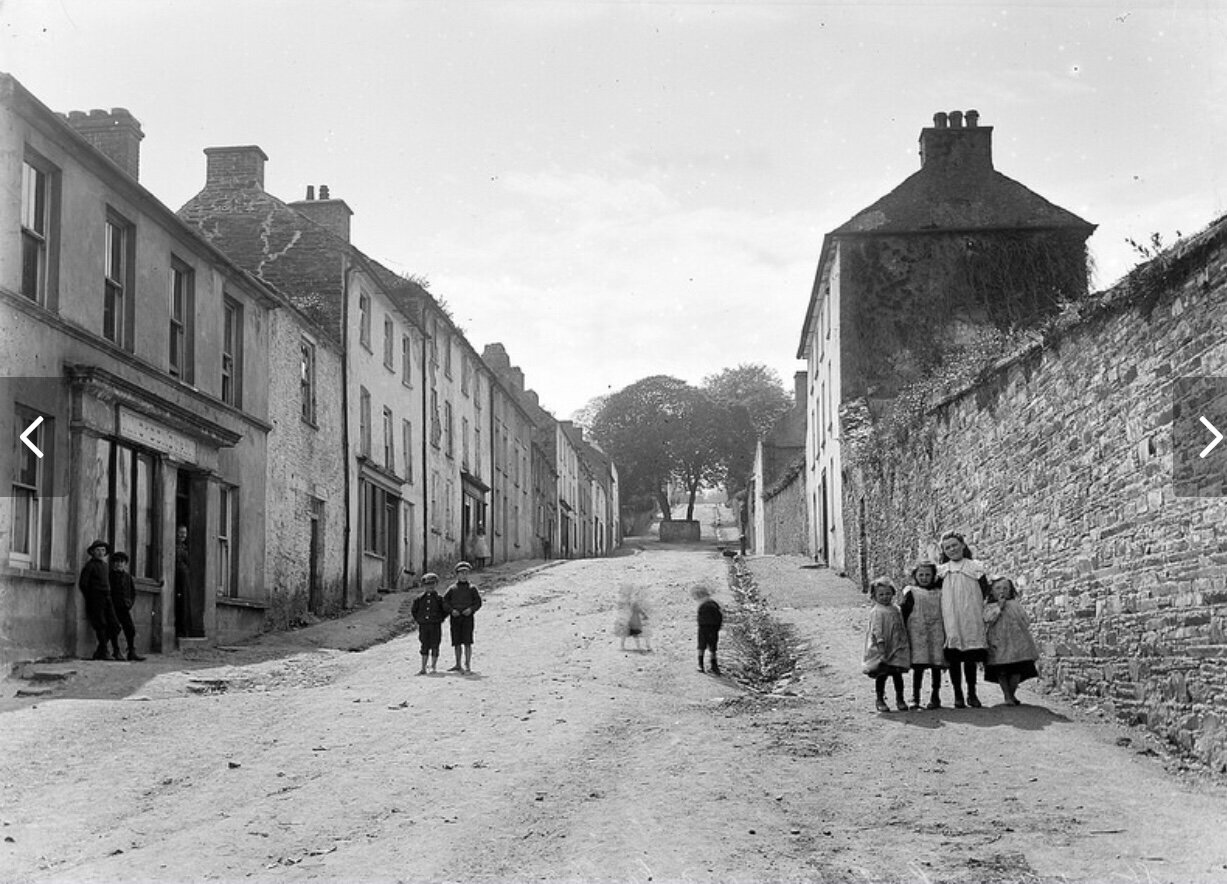I’m a big fan of the National Library of Ireland photography archives, not only because they give us a true life glimpse behind the curtains of time but also because they help fire up my imagination. So, for a bit of festive fun, I compiled a Top Ten list of the historical images I used on my Instagram profile this year. These are the ones that received the most likes.
1. A VISIT TO THE COTSWOLDS
This was the most popular photograph. It features one of the Dillon sisters from Clonbrock House in Co Galway. She’s visiting a Cotswold village in Gloucestershire, England in the early 1900s. Is she wondering who lives in this house? Is she waiting for a friend to come out? Or maybe she’s just admiring the wisteria growing up the front.
The Dillon family had a keen interest in photography and the National Library of Ireland acquired their family papers and photographs when Clonbrock House was sold in 1976. Their photographs provide an interesting record of a time long gone.
2. Ormond Castle, Carrick-on-Suir, Co. Tipperary
What ghosts walk the corridors of Ormond Castle? A fine example of an Elizabethan manor house with mullioned windows but it doesn’t look the place to visit on a dark night.
Thankfully this mansion added to an earlier castle hasn’t tumbled to a pile of ivy-covered rubble because it has been restored. You’ll find it in Carrick-on-Suir in County Tipperary. It was built by Thomas Butler, 10th Earl of Ormond.
If you’d like to see the restoration result, google Ormond Castle. I’m looking forward to a tour one day soon.
3. Clonbrock House in Co Galway circa 1860
Clonbrock House was built around 1790 for the Dillon family (see No. 1 in this list). A fine example of an Irish country estate, Clonbrock was sold in 1976 when the last remaining family member, Ethel Dillon, moved out. A fire ten years later destroyed the property and it is now a ruin covered in ivy. A sad demise for a magnificent house.
4. Trim Castle in Co Meath
Trim Castle is the largest Anglo-Norman castle in Ireland and took 30 years to build from 1174 onwards. It was used as a film set for Braveheart, the movie starring Mel Gibson as William Wallace, the 13th century Scottish warrior.
Owned by Hugh de Lacy and his son Walter, it was built as a fortress in County Meath on land granted by King Henry the Second in an attempt to keep the ambitions of another powerful Anglo-Norman under control, namely Richard de Clare known as ‘Strongbow’.
5. Pilgrims heading for Lough Derg
This is what a traffic jam in Ireland in 1900 looked like. These pilgrims are heading for Lough Derg in Co Donegal, which is an island shrine to the Christian Saint Patrick. For more than 1,500 years it has attracted people of all ages. This photo was taken by the famous photographer Robert French who recorded many scenes from Irish life.
6. Lough Swilly in Co Donegal
The next most popular photo was another lake in Co Donegal in the late 19th century, also taken by Robert French, but this one has a completely different story.
One of the historic uses of this beautiful but lonely place was to protect the British Grand Fleet in the First World War. Admiral Jellicoe commanded the Grand Fleet and on 22nd October 1914 more than 35 war ships, aircraft carriers and submarines anchored here because it provided security from enemy U-boats. Lough Swilly was chosen for its good depth of water and the fleet remained until November that year.
7. Two young ladies with their floral blocks
This is one of my favourites. Can you remember your introduction to ABC? Two young ladies learning about gardening with their floral alphabet set in 1884. They are Edith and Ethel Dillon from Clonbrock Estate in Co Galway. One of them, I’m not sure which, features in the No. 1 photograph at the top of this list taken about 20 years later. This is another lovely image taken by a member of the Dillon family.
8. Archery
Archery was one of the few sports women were encouraged to pursue in the Victorian era. Anthony Trollope’s 1875 novel ‘The Prime Minister’ mentions men and women competing against each other. Only the wealthy took part, however, as equipment was expensive and dresses were high-fashion. Here are two young people enjoying themselves.
9. Eviction scene
This old photograph certainly tells a story. It’s the tragic aftermath of an eviction scene in nineteenth century Ireland where tenants and their possessions have been put outside the gate.
One thing I notice is state of the pillars, with the top stones missing on one. Was this an old abandoned estate which the landlord left decades before? Who were these unfortunate tenants and where did they go? We will never know. Photo by Thomas J. Wynn.
10. Castletownshend, Co Cork
And last but not least is the village of Castletownshend in West Cork photographed around the time of one of its most famous inhabitants: Edith Somerville who lived in Drishane House at the top of this street.
Somerville and her cousin ‘Martin Ross’ (her real name was Violet Florence Martin) from Galway wrote the Experiences of an Irish RM novels. The first was published in 1899. They were made into a TV series starring Peter Bowles as the Major and Brian Murray as the irrepressible Flurry Knox, master of foxhounds and horse dealer extraordinaire.
There’s a quote in the foreword of the 1944 Everyman edition describing the Irish RM novels as a miraculous cure for quinsy. A grateful wife sent a letter recounting how her suffering husband begged for a last chapter to be read to him before he died. During his last agonising fits of laughter, the quinsy broke and he recovered. Now there’s a recommendation, but you don’t need a rare and potentially fatal complication of tonsillitis to relish these hilarious stories that are full of affection for an Ireland long gone.
These photographs are all copyright free and come from the archives of The National Library, Dublin. If you’d like to see more, follow The National Library on The Commons on Flickr.
Wishing you all a very happy Christmas and a healthy New Year.
Suzanne x










